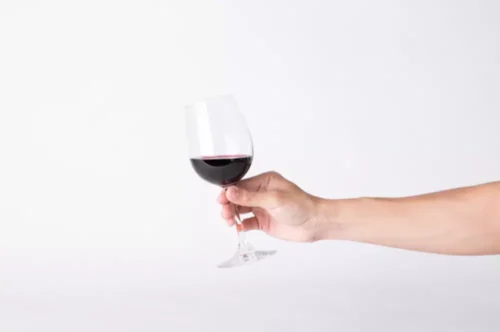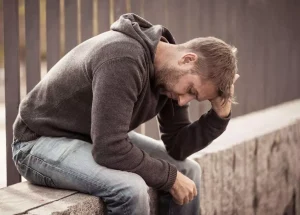
This is particularly relevant when alcohol is naturally present in the feared situations. As therapy for SAD involves exposure to feared situations, it is important to make sure that alcohol is not used as a means of managing the exposure tasks. We also tested the ‘direction of causation’ models with the repeated lifetime assessments of other anxiety disorders and AUD. In the model with shared risk factors, can drinking alcohol cause panic attacks the genetic correlation between other anxiety disorders and AUD was 0.66 (95% CI, 0.44, 0.88) and the environmental correlation 0.05 (95% CI −0.26, 0.30). Because both phenotypes are influenced by environmental factors, the lack of environmental association makes causal model less plausible. In line with the longitudinal analyses, the model with shared risk factors (model 4) had the best fit.
Treating Co-Occurring Anxiety and Alcohol Use Disorders
In other words, the processes involved in the initiation and the maintenance of comorbidity may differ in meaningful ways. One hypothesis emerging from the comorbidity literature is that anxiety and AUDs become intertwined in a reciprocal, perpetuating cycle. This positive feedback loop often is characterized as a feed-forward or mutual-maintenance pattern. Fortunately, several evidence-based strategies are available for treating anxiety and AUDs, including both pharmacotherapy and psychotherapy approaches. Administration of these methods for comorbid individuals is complex and may require modification of standard procedures to yield the greatest efficacy. It also is notable that the optimal sequence and timing of treatments remain undetermined even after decades of scientific inquiry.
Anxiety disorder diagnoses
- Many individuals will use alcohol as an unhealthy coping tool to reduce symptoms of anxiety.
- Because both phenotypes are influenced by environmental factors, the lack of environmental association makes causal model less plausible.
- The self-medication explanation for the comorbidity of anxiety and AUDs has received the most attention in the clinical and research literature.
- Later in the sleep stages, alcohol disrupts REM sleep and paralytic sleep, which is when your body rejuvenates itself.
- Alcoholism leads to a range of biopsychosocial problems, and anxiety can result from alcohol-related disturbances in each of these domains.
In addition, there is a risk of an electrolyte imbalance involving decreased sodium concentrations in the blood (i.e., hyponatremia), which can reduce the seizure threshold. This may be especially relevant during alcohol withdrawal, and clinicians therefore should monitor fluid intake and sodium levels during these periods. Medications that target a brain signaling system which uses the neurotransmitter serotonin and its receptors perhaps are the safest and most widely used agents to treat anxiety disorders. Similar to the common-factor and self-medication hypotheses, the literature underpinning the substance-induced pathway to comorbid anxiety and AUDs is convincing but cannot account for the findings consistent with the other causal models. It also is important to note that reliance on timeframes, although useful, could mask an independent course of anxiety symptoms among individuals who also have an AUD.
Risk factors
First, the consistent presence of social disturbances may activate and intensify anxiety symptoms among these already vulnerable individuals. Second, alcohol use in the presence of stress stimuli may interfere with extinction-based learning necessary for normal adaptation to stressors. Thus, hazardous drinking can lead https://ecosoberhouse.com/article/how-long-do-amphetamines-stay-in-your-system/ to anxiety through a noxious combination of greater levels of life stress coupled with relatively poor coping skills. Model fit indices from biometric structural equation modelling of social anxiety disorder (SAD), other lifetime anxiety disorders (AnxIRT), and alcohol use disorder (AUD) occurring the last five years.
Why Do I Get Super Anxious the Day After Drinking?
We then described the longitudinal relationship between the SAD, AnxIRT, and AUD at the two time points with a structural equation model (SEM) for ordinal data (liability-threshold model). It is unknown whether social anxiety disorder (SAD) has a unique association with alcohol use disorder (AUD) over and beyond that of other anxiety disorders, how the associations develop over time, and whether the associations are likely to be causal. First, historical trends and research related to the psychiatric classifications of alcohol misuse, negative affect, and their co-occurrence are reviewed, including typologies and diagnoses.
Get help for alcoholism today.
This model proposes that people with anxiety disorders attempt to alleviate negative consequences of these conditions (i.e., are negatively reinforced) by drinking alcohol to cope with their symptoms, eventually leading to the later onset of AUDs. This concept, in fact, is shared by several models of alcoholism, including the self-medication (Khantzian 1985; Quitkin et al. 1972), tension reduction (Conger et al. 1999), and stress-response dampening models (Sher 1987; Sher and Levenson 1982). When people with comorbid anxiety and AUDs are queried about their drinking, they typically endorse purposeful and targeted drinking to cope with their anxiety. The reported rates of self-medication in clinical samples of people with both types of disorders have ranged from 50 to 97 percent, with the highest rates among people with phobias (Bibb and Chambless 1986; Smail et al. 1984; Thomas et al. 2003; Turner et al. 1986). A recent review revealed similar results from other studies (Schuckit and Hesselbrock 1994). For example, a 10-year followup of young men and women who originally had been studied during their mid-teens by Ensminger and colleagues1 showed no close association between preexisting anxiety symptoms and AOD-use patterns in either sex.

What are the immediate clinical implications of coexisting depressive and anxiety states among alcoholics?

In fact, 50% of people receiving treatment for alcohol use disorder also live with an anxiety disorder. There are many effective treatments for anxiety and alcohol use disorders, including ongoing individual therapy, group therapy, prescribed medications, or a combination of these methods. About 20 percent of people with social anxiety disorder also suffer from alcohol dependence.
- Once a person becomes deeply depressed, regardless of the cause, he or she may need to be hospitalized and provided with the appropriate precautions against suicide.
- Overall, about 1 in 5 people who start drinking will develop an alcohol use disorder at some point in their lives.
- A central prediction of this causal model is that abstinence from alcohol should be followed closely by a conspicuous decrement in anxiety symptoms.
- Also, an 18-year followup of 80 children who had experienced severe depressive episodes earlier in life revealed no evidence of an increased risk for alcoholism during the followup period (Harrington et al. 1990).
- For clients with both alcohol use and anxiety disorders, however, a potential limitation of RPT is that avoidance of anxiety-inducing situations can preclude any potential anxiety reduction via exposure therapy, which in contrast requires clients to directly confront such situations.
Lifestyle changes and treatment options for anxiety
- This resembles Mendelian randomization, but requires no explicit gene or instrument variable (Briley, Livengood, Derringer, & Kandler, 2018; Rosenstrom et al., 2019).
- Learning to manage anxiety (and naturally boost your CREB levels) in healthy ways such as through exercise, music, and expressing creativity is possible.
- Adult women on the whole drink less alcohol than men and have lower rates of alcohol-related disease and death.
- For example, women may be more prone than men to self-medicate for mood problems with substances such as alcohol (Brady and Randall 1999).
- It also is notable that the optimal sequence and timing of treatments remain undetermined even after decades of scientific inquiry.
- It is common practice for someone to have a drink or two after a hard day to alleviate stress.
Leave a Reply